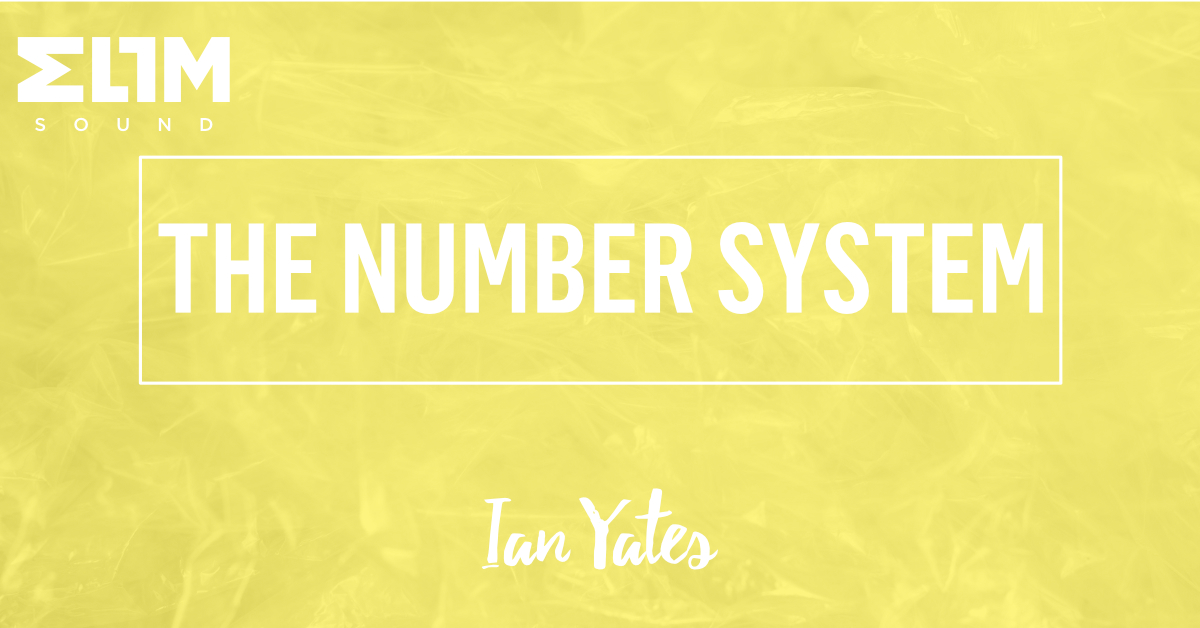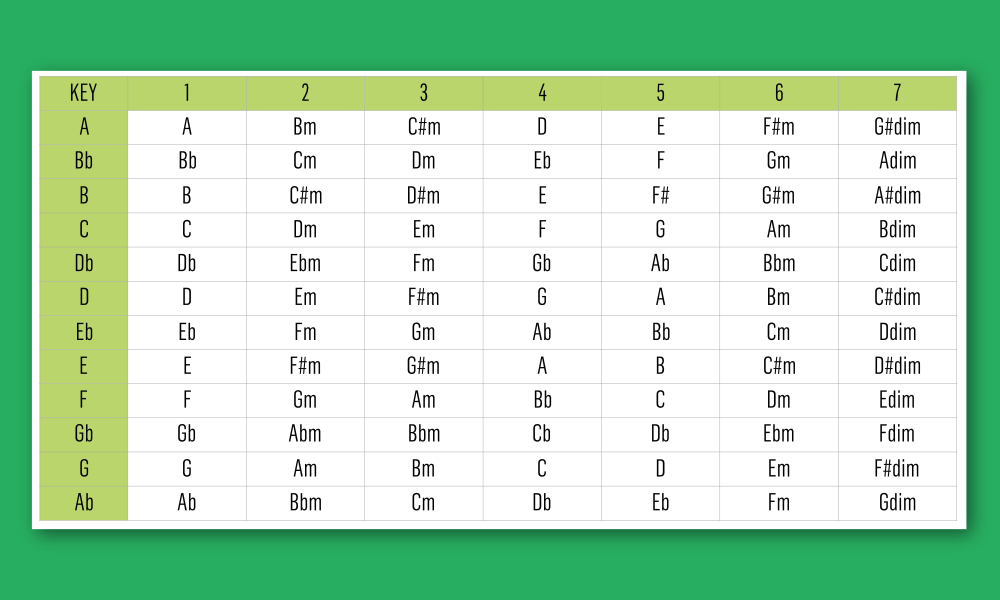
Do you use the Nashville Number System?
Have you heard of the number system or the ‘Nashville Number System’? Ian Yates shares about the system, one that he has found to be a great tool to develop a team of musicians.

How does it work?
The idea is that each key has 7 predictive chords. In the key of C, these would be: C major / D minor / E minor / F major / G major / A minor / B diminished
Each chord is assigned a number 1-7
1 = C
2 = Dm
3 = Em
4 = F
5 = G
6 = Am
7 = Bdim

This translates across all keys. Here are examples in Key of E and G.
Example Key of E

Example Key of G

Song example
Verse: | 1 / / / | 4 / / / | 5 / / / | 4 / / / |
Chorus: | 6 / / / | 4 / / / | 1 / / / | 5 / / / |
Bridge: | 4 / / / | 2 / / / | 1 / / / | 5 / / / |
Key of C:
Verse: | C / / / | F / / / | G / / / | F / / / |
Chorus: | Am / / / | F / / / | C / / / | G / / / |
Bridge: | F / / / | Dm / / / | C / / / | G / / / |
Key of E:
Verse: | E / / / | A / / / | B / / / | A / / / |
Chorus: | C#m / / / | A / / / | E / / / | B / / / |
Bridge: | A / / / | F#m / / / | E / / / | B / / / |
Chord inversions
Accidentals modifying a scale degree are usually written to the left of the number.
Examples
♭7 ("flat 7") represents a B♭ major chord in the key of C or an A♭ major chord in the key of B♭.
Examples in the key of G
F = ♭7 ("flat 7")
C# = ♭5 (“flat 5”)
Cm = -4 (“minor 4”)
Dm = -5 (“minor 5”)
Chord inversions or slash chords
Examples in the key of G
G/B = 1/3
D/F# = 5/7
C/G = 4/1
D/G = 5/1
Other chord qualities such as major sevenths, suspended chords, and dominant sevenths use familiar symbols:
4Δ7 = Major 7th
5sus = Suspended chord
57 = 7th
Example in G
4Δ7 = CΔ7
5sus = Dsus
57 = D7
These would stand to be:
FΔ7 Gsus G7 in the key of C
or E♭ Δ7 Fsus F7 in the key of B♭.
A superscript 2 means "add 2" or "add 9".
Using the Nashville Number System
So why would you use the Nashville Number System? In this short video clip, Jesus Culture explain how a band of musicians can use it to effectively and quickly communicate while playing together.
A little background history
The Nashville Number System is a method of transcribing music by denoting the scale degree on which a chord is built. It was developed by Neal Matthews, Jr. in the late 1950s as a simplified system for The Jordanaires to use in the studio and further developed by Charlie McCoy. It resembles the Roman numeral and figured bass systems traditionally used to transcribe a chord progression since as early as the 1700s.
The Nashville Number System can be used by someone with only a rudimentary background in music theory. Improvisation structures can be explained using numbers and chord changes can be communicated mid-song by holding up the corresponding number of fingers. The system is flexible and can be embellished to include more information (such as chord colour or to denote a bass note in an inverted chord).
The system makes it easy for bandleaders, record producer or lead vocalist to change the key of songs when recording in the studio or playing live, since the new key just has to be stated before the song is started. The rhythm section members can then use their knowledge of harmony to perform the song in a new key.
Do you use the Nashville Number System? What’s your experience using it?
Enjoy this article? Don't forget to share